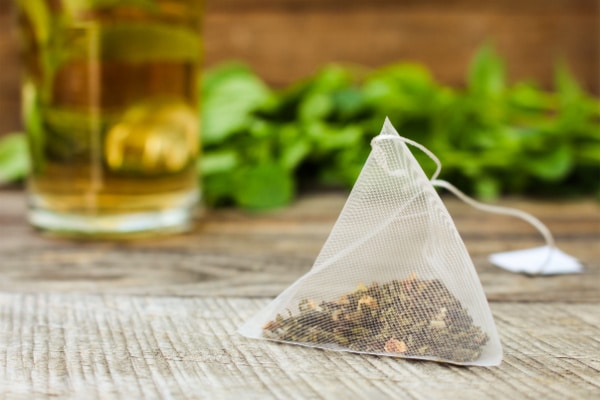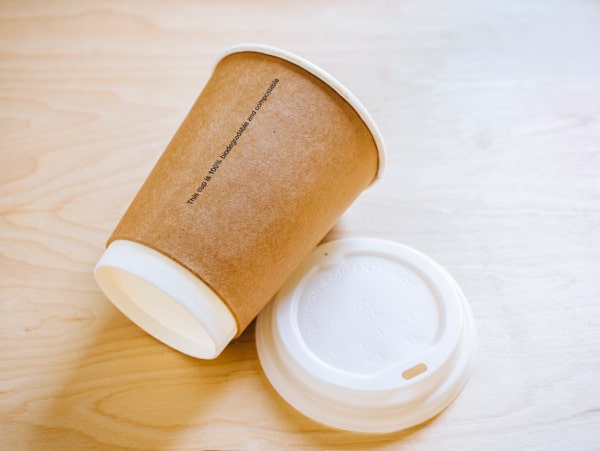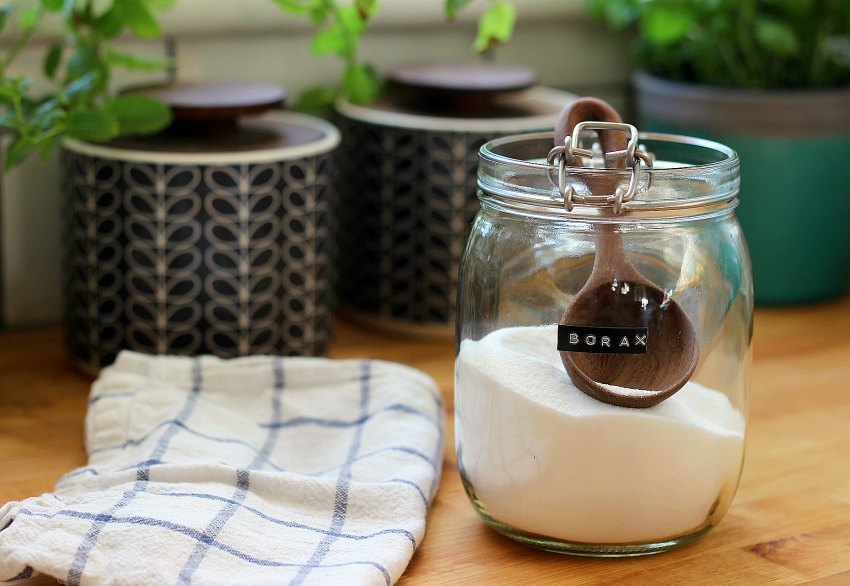What Is PLA And Is It Actually Biodegradable?
To support the running costs of Moral Fibres, this post may contain affiliate links. This means Moral Fibres may earn a small commission, at no extra cost to readers, on items purchased through these links.
Wondering what PLA is? Here’s everything you need to know about this material, including whether PLA is biodegradable or compostable or not.
PLA is having quite the moment. It’s touted as a sustainable solution to plastic and found everywhere from teabags to food packaging and coffee cups. But what is PLA exactly, and is it the sustainable silver bullet that we’re being led to believe it is?
I spoke to Professor Andrew Mayes, Professor of Analytical and Materials Chemistry at the University of East Anglia to find out more.
Andrew’s research work focuses on both polymer design and microplastics, and recent work has seen him support Masters students with research into PLA. This makes Andrew the perfect person to spill the tea on PLA.
What is PLA Exactly?

First off, it’s important to know what PLA is exactly.
PLA stands for polylactic acid. In simple terms, this is a type of polyester that’s been specially formulated from natural materials to replace petroleum-based plastics.
If you want to know more about its composition, then PLA is chemically related to PET (Polyethylene terephthalate, to give it its full name). This is the material most plastic drink bottles are made from. Yet unlike PET, which is made from fossil fuels, the lactic acid from which PLA is produced can be made entirely from natural products.
These natural products that we speak of tend to be food crops. PLA tends to be made from maize. However, it can also be made from sugar cane, beet, or anything that produces starch such as potatoes or grains. These are then naturally fermented to form a bio-plastic – a plastic of non-fossil-fuel-based origin.
Brands like to use PLA because it is sourced from renewable resources. And unlike standard plastics, it is also biodegradable.
Is PLA Really Eco-Friendly?
At face value, PLA certainly sounds good. However, when I asked Andrew if PLA is as eco-friendly as brands would have us believe, the picture certainly looks murky.
Andrew describes the process of making lactic acid and PLA as “relatively benign” for the environment. The plants from which it is made absorb carbon dioxide as they grow, so the production of PLA might be considered good from that perspective.
However, issues soon arise when it comes to the disposal of PLA products. These issues really throw shade on many of the sustainability claims that brands use when discussing PLA.
Is PLA Actually Biodegradable?
Many brands claim that PLA is biodegradable. But as you may know, the terms biodegradable and compostable are two very different beasts. So before you put any PLA in your compost bin, I asked Andrew about PLA’s biodegradability.
Andrew explains that “it is true that PLA is biodegradable, as it satisfies the formal definition based on certain prescribed tests. Unfortunately, these tests do not relate well to real-world conditions.
PLA requires quite a lot of heat and a very moist environment to break down efficiently. The problem is that such conditions are really only created in commercial composting conditions, where stuff is rotted down by microbes in huge heaps that can get very hot inside.
A small domestic compost heap almost never creates these kinds of conditions. This means PLA that you compost at home will likely take many years to decompose back to small molecules that can be used as food by bacteria and funguses.”
So hold off putting PLA in your home compost bin. There are about a million other things that are better suited for composting, that will break down much faster.
So How Should We Put PLA Products In Our Recycling Bin?
If PLA isn’t home-compostable, then this leads us to the next question – how should we dispose of PLA products? You might be wondering if PLA products should be recycled. I put this question to Andrew to help keep us right.
“It is true that PLA is recyclable, but this does not mean that it is recycled! It has lots of good properties that would make it good to be recycled. Unfortunately, because it is not used much at present, most commercial waste handlers do not have a dedicated stream for it at recycling centres.
What this means is that rather than being recycled, it ends up in the “everything else” skip that recycling companies don’t know how to sort or deal with. This is usually land-filled or incinerated.
In this sense, PLA is viewed as a “contaminant” in the recycled materials mixture, rather than being an integral part of it. This could be changed if the volume was much bigger, but there are issues around how ethical PLA is.”
What About Kerbside Composting Schemes?

So, in the main, we can’t recycle PLA products. But what about composting it via kerbside composting schemes that most local authorities provide?
Andrew further explains that “theoretically composting is correct, and will probably work well for things like tea bags containing PLA mixed up with the paper and leaves. The fine fibres of PLA will probably break down quite quickly under such conditions since they have a lot of surface area for the microbes to attack.
Related reading: Guide to plastic-free teabags
Larger objects like bottles would not break down so quickly though, even if they went through industrial shredders prior to composting.
And in reality, plastic objects are removed from green waste as a “contaminant” prior to the industrial composting process. This is because they don’t want loads of shredded plastic in the compost. As far as the composting plant is concerned, plastic waste is plastic waste. They don’t tend to check it and sort it, or ask if it will degrade or not. They just remove it all and probably send it to landfill or incinerate it.”
How Do We Access Industrial Composting Schemes?
So kerbside composting isn’t an option for most types of PLA. But as most types of PLA can be composted industrially, surely the answer is to compost it that way. The problem is that most of us don’t have access to these types of schemes.
The UK’s food waste sector has been led by government subsidies and guidance that favours anaerobic digestion (without oxygen) as the preferred method of food waste treatment. The government’s stance is that anaerobic digestion is better for the environment than composting. This is because it can produce renewable energy (in the form of biogas) in addition to recycling nutrients.
This means that most of our food waste collection and treatment infrastructure is orientated accordingly. It’s not set up to deal with compostable packaging products that require oxygen to break down.
Some coffee shops that sell their coffee in compostable coffee cups (made of PLA), do have a paid-for arrangement with the manufacturers to collect and industrially compost their cups. However, just because they dispense their drinks in PLA cups, this doesn’t mean that they pay to have the cups collected and properly composted. The only way to be sure is to check before you buy.
So Why Do Brands Use PLA?

Given that PLA doesn’t tend to be recycled, kerbside composting schemes don’t tend to compost PLA (beyond teabags), and industrial composting facilities aren’t widespread, it makes us wonder why brands are using PLA. I quizically put this to Andrew. The answer was straightforward. Greenwashing.
“Both the words renewable and biodegradable sound nice and people immediately assume that this makes it [their product] good. Marketing departments ruthlessly exploit this “feel good” aspect to create the impression that their products are all beautiful and harmless. Unfortunately, this is untrue for a variety of reasons.”
When it comes to tea bags, it’s a little more opaque. PLA is typically used to replace polypropylene, a plastic that is used to heat-seal tea bags. I, therefore, wondered if PLA is a better choice in this instance.
Andrew says “PLA is definitely an improvement on polypropylene that was in widespread use previously. It will break down in composting. And it will eventually break down in your home compost – over some years, or at worst tens of years. Polypropylene might last for hundreds of years or more – we really don’t know.”
However, Andrew warns that PLA should not be thought of as completely benign. From a health perspective, the picture is less clear-cut.
Andrew says “The production processes and the material itself are probably (though we can’t be sure) less hazardous than many petrochemical plastics. However, the jury is really out on the health implications of all types of plastics.
It would be better if PLA was not there [in teabags]. Yet currently, the only real alternative to one type of plastic or another is a more expensive bag created by folding and stitching or stapling. You find this in premium brands where the higher manufacturing costs can be justified. However, for everyday commodity bags, the production cost is really problematic. Especially given current food inflation and general cost of living issues.”
What About Microplastics?
One of the biggest issues with teabags sealed with polypropylene is the issue of microplastics. These are those tiny pieces of plastic that are turning up everywhere, from the bottom of the deepest ocean trenches to inside our bodies. I, therefore, asked Andrew if PLA produces microplastics:
“As larger pieces of PLA break down, they will produce microplastics just like any other type of plastic that breaks down. As the size gets smaller though, the amount of surface for microbes to attack increases. This means small microplastic fragments should break down quicker. This is the natural pathway for biodegradation.
Are those PLA microplastics harmful in the meantime? We don’t really know for sure. The limited evidence suggests that they are pretty much like many other types of microplastics, in terms of how small organisms interact with them, and how they might get transported through environments and food chains. So the answer is probably yes, but they may be less harmful overall because they will likely be present in the environment for less time.”
And What About Ethics?
Whilst we’ve covered issues around the sustainability of PLA, something I wanted to dig into was the ethics of PLA production. Andrew had previously mentioned issues around how ethical producing PLA is, so I asked Andrew to explain more:
“Ethically, there is potentially a big problem with PLA production. Is it right for rich Western economies to transfer valuable food crops to produce PLA plastic to make their lives easy and their environmental consciences clearer?
On a small scale (e.g. for tea bags, where we’re talking about only a few thousand tonnes a year) it is fine. But if this was done on a massive scale – imagine making all of a major beverage company’s drink bottles out of PLA instead of PET – then that would have a major impact on global commodity prices. People in developing countries could potentially starve as a result.”
Are There More Sustainable Solutions To PLA?

Given the issues around the disposal of PLA and the ethical issues of using food crops to make this material, I wondered if there are more sustainable solutions.
Andrew explained “There is currently lots of research in this area, exploring all kinds of stuff – from packaging made from food waste to seaweed or other algae.
If we could figure out how to break down and ferment lignin – the “resin” component that sticks cellulose fibres together in woody plants – it would give us access to loads of feedstocks [the raw material for making PLA] from agricultural waste. Here things like straw, nut shells, vegetable waste, etc., could be used without depriving the planet of food staples. We could then make chemical feedstocks from that, to make new plastics and materials.
Unfortunately, lignin is much more complex to biodegrade. It is much tougher and much more chemically diverse than starch and cellulose. This means processing it is much more expensive and time-consuming. Biologists and chemical engineers will no doubt figure it out, but it will take a while.”
The Bottom Line On PLA
Brands may tout PLA as a sustainable solution to petroleum-based plastics. And PLA might have some green credentials. But it’s important to take these with a pinch of salt.
For teabags, PLA can be a more sustainable alternative to teabags sealed with conventional plastic. However, it’s not without its problems, and you shouldn’t compost these at home.
For other items, PLA may not be the greenest solution. Whilst these items are made from renewable resources, the benefits tend to stop there. Items may not biodegrade or compost in the way that you had hoped and may ultimately end up in landfill. There are also ethical issues around the production of PLA to grapple with.
In short, beyond teabag manufacturers, be wary of brands that tout PLA as a sustainable solution. It may be that you are being greenwashed.
Found this post useful? Please consider buying me a virtual coffee to help support the site’s running costs.




